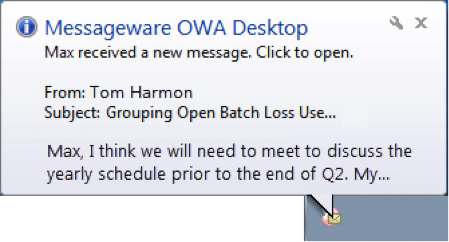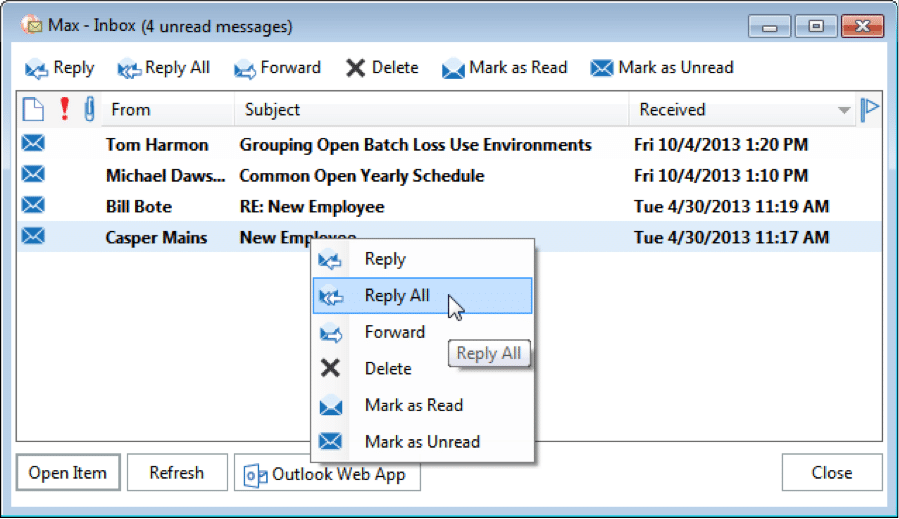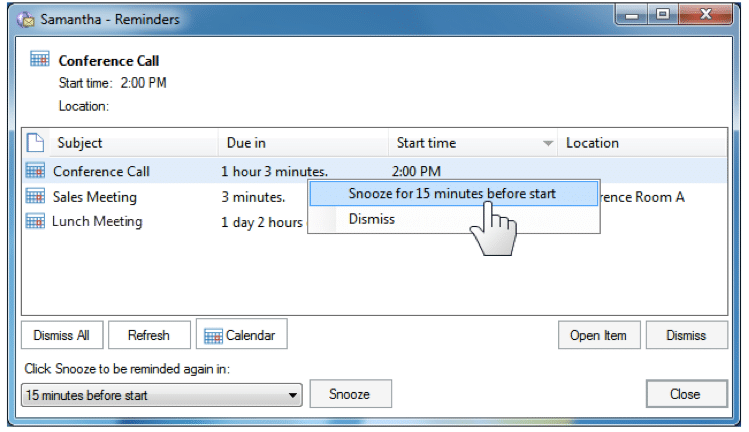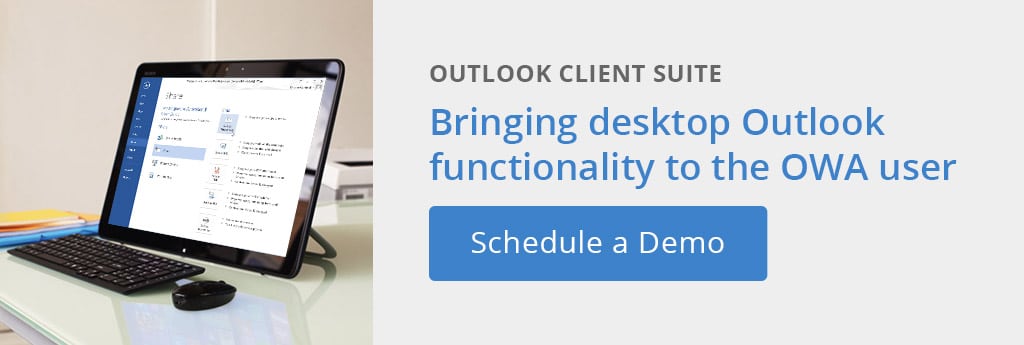With the trend toward cloud computing accelerating, companies are taking the opportunity to review their desktop application strategies and many are opting to migrate onto web-based email and scheduling applications. As such, Microsoft’s Outlook Web (OWA) and Office 365 are rapidly gaining acceptance with organizations wanting to provide users with anywhere access, improve ease of use, and reduce the costs associated with support and licensing.
However, there are limitations to Outlook Web, for both on-premises and Office 365, which can negatively impact a user’s productivity. Most notably with relation to email notifications and calendar reminders. When a new email arrives the user may or may not see a notification informing them that they have mail. The user will only see a new mail notification if:
- Outlook Web is open and connected;
- Outlook Web is not minimized;
- The top right hand corner of Outlook Web is not covered by another window;
- The user is looking at the screen at the precise time that the notification occurs.
The notification will flash at the top right of the OWA window, for a second or two, so if a user’s focus is not on the Outlook Web window at the time the user will not see the notification, even if all three of the other conditions are met. The reason for this is that browsers cannot create notifications outside their windows. In summary, in native OWA it is difficult for a user to know when new emails have arrived.
Calendar reminders are somewhat more useful, because the reminder remains on the screen until it is dismissed by the user. However, as with new mail notifications, the user will only see the appointment reminder if:
- Outlook Web is open and connected;
- Outlook Web is not minimized;
- The upper right corner of the Outlook Web window is not covered by another window.
The user cannot rely on the default email notification and calendar reminders in Outlook Web or Office 365, and there is a good possibility users will miss a new mail or a calendar notification, especially when they are working in other applications.
The following screen shot shows a common scenario where the user is working in Microsoft Word on top of Outlook Web or Office 365. A partial box (which we have outlined in red for this example) at the top right hand corner is the email notification.
Users who need to be diligent in responding quickly or rely on the system to remind them to go to an appointment will need to continually interrupt their work to check if they have a notification pending. In contact centers, where customer service is a high priority, this can have an adverse impact on call closure rates, causing customer dissatisfaction and low employee morale.
There are, however options available to give employees Outlook desktop-like notification functionality with Outlook Web.
Creating a desktop-like Experience for Outlook Web and Office 365 Users
If you are looking for a solution to the notification problem, then check out Messageware OWA Desktop. OWA Desktop upgrades your Outlook Web and Office 365 notifications to Outlook desktop quality or better. Using the same example as above, this time with OWA Desktop running, users see a pop-up notification informing them that a new email has arrived. The pop-up overlays the windows that the user is working with so they are guaranteed to see the notification. As well, the notification window will allow the user to deal with the new mail directly from the notification box. There is no need to go back to the full Outlook Web screen.
In its simplest form, OWA Desktop can be configured to have a balloon style pop-up notification, or the more functional notification pop-up shown above, whenever a new email arrives, regardless of whether or not the user has Outlook Web / Office 365 open in a browser.
Active Inbox and Reminder pop-ups can be displayed. Not only notifying users of a new email or calendar reminder, but also showing them a list of unread mail and allowing them advanced options to process the email, or update a calendar reminders.
With OWA Desktop there is no need for a log-on every time a user would like to view or send a message or access their calendar. Users have one-click access to email and appointment alerts right from the system tray. If you are interested in improving user productivity by bringing back Outlook-like functionality to Outlook Web environments, we would be happy to send you a free trial or schedule a demo.






